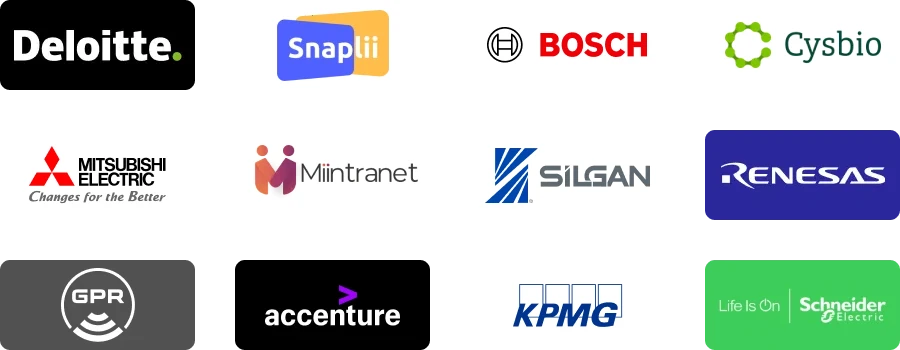| REPORT ATTRIBUTE |
DETAILS |
| Historical Period |
2019-2022 |
| Base Year |
2023 |
| Forecast Period |
2024-2032 |
| NATO Military Aircraft Modernization Market Size 2024 |
USD 2092.65 million |
| NATO Military Aircraft Modernization Market, CAGR |
5.35% |
| NATO Military Aircraft Modernization Market Size 2032 |
USD 3175.18 million |
Market Overview:
The NATO Military Aircraft Modernization Market is projected to grow from USD 2092.65 million in 2024 to an estimated USD 3175.18 million by 2032, with a compound annual growth rate (CAGR) of 5.35% from 2024 to 2032.
The growth of this market is fueled by a combination of geopolitical tensions, aging military fleets, and the need for technological parity among NATO allies. Increasing threats in Eastern Europe, the Middle East, and other strategic regions have necessitated robust aerial capabilities, prompting NATO members to prioritize aircraft modernization programs. These initiatives include upgrading avionics, integrating precision-guided weapon systems, and enhancing surveillance capabilities to meet modern warfare requirements. Advancements in defense technology also play a pivotal role. Emerging technologies such as artificial intelligence (AI)-enabled systems, advanced radar and communication equipment, and enhanced electronic warfare systems are becoming integral to modernization efforts. NATO’s emphasis on a unified approach to defense has encouraged member nations to adopt standardized upgrades, fostering collective security and operational efficiency. Additionally, the focus on sustainability and reduced lifecycle costs is influencing market trends. The adoption of fuel-efficient engines, lightweight composite materials, and maintenance-friendly designs are helping nations modernize their fleets while addressing environmental and fiscal constraints.
Europe holds the lion’s share of the market, driven by heightened defense expenditure among major NATO allies such as Germany, France, and the United Kingdom. The ongoing Russian-Ukrainian conflict has heightened the urgency for Eastern European nations to upgrade their air fleets, further bolstering the market. Western European nations are also investing significantly in cutting-edge aircraft technologies to remain strategically agile and maintain NATO’s defense leadership. North America, led by the United States, represents another dominant region in the market. The U.S., as NATO’s principal member, continues to spearhead modernization efforts through programs like the F-35 Lightning II Joint Strike Fighter and the B-21 Raider stealth bomber. Canada’s investment in interoperability-focused upgrades is also contributing to regional market expansion.
Access crucial information at unmatched prices!
Request your sample report today & start making informed decisions powered by Credence Research Inc.!
Download Sample
Market Insights:
- The market is projected to grow from USD 2,092.65 million in 2024 to USD 3,175.18 million by 2032, with a CAGR of 5.35%, driven by modernization initiatives to counter evolving geopolitical threats.
- Geopolitical tensions, particularly in Eastern Europe and the Middle East, are prompting NATO members to strengthen their aerial capabilities, emphasizing rapid fleet upgrades.
- The modernization of aging aircraft fleets remains a priority, with nations focusing on avionics upgrades, structural modifications, and weapon system enhancements to extend fleet life.
- Technological advancements, including AI-enabled systems, advanced radar, and electronic warfare capabilities, are transforming NATO’s aerial operations and driving innovation.
- The focus on sustainability has led to the integration of fuel-efficient engines, lightweight materials, and maintenance-friendly designs, reducing lifecycle costs.
- Europe leads the market with approximately 40% share in 2024, driven by heightened defense spending among major NATO members such as Germany, France, and the UK.
- Interoperability efforts across NATO forces are fostering investments in standardized systems, ensuring seamless operations and collective defense readiness during joint missions.
Market Drivers:
Rising Geopolitical Tensions
Geopolitical challenges, particularly in Eastern Europe and the Middle East, are among the most significant drivers of the NATO Military Aircraft Modernization Market. The ongoing conflict in Eastern Europe, especially the Russian-Ukrainian war, has heightened the urgency for NATO members to strengthen their aerial defense capabilities. For instance, countries like Poland and the Baltic States have significantly increased their defense budgets, focusing on acquiring advanced air defense systems to counter potential threats. Similarly, tensions in the Middle East have underscored the need for robust air power to address asymmetric threats. NATO member nations are prioritizing the modernization of their military aircraft to maintain deterrence, enhance strategic readiness, and ensure a rapid response to evolving threats in these volatile regions.
Modernization of Aging Aircraft Fleets
Many NATO member states operate aging military aircraft fleets that are increasingly costly to maintain and struggle to meet the demands of modern warfare. This aging fleet issue drives the need for extensive upgrades, including structural modifications, avionics enhancements, and the integration of advanced weapon systems. For example, the United Kingdom’s Royal Air Force has undertaken significant modernization programs for its Typhoon and Tornado fleets to extend their service life and enhance operational effectiveness. Modernization not only extends the operational lifecycle of these aircraft but also ensures they remain technologically relevant. As nations face budgetary constraints, upgrading existing platforms often proves more cost-effective than procuring new aircraft, further fueling the demand for modernization programs.
Advances in Defense Technology
Technological advancements are a key enabler of growth in the market, with innovations such as artificial intelligence (AI), enhanced radar systems, and electronic warfare capabilities transforming military operations. AI-driven systems are improving decision-making processes, situational awareness, and predictive maintenance. For instance, AI-powered diagnostic tools in the US Air Force’s fleet enable predictive maintenance, reducing downtime and improving operational readiness. Additionally, advancements in precision-guided munitions and stealth technology are reshaping combat strategies, enabling NATO forces to operate effectively in contested environments. These developments compel member nations to invest in cutting-edge upgrades to maintain a competitive edge in aerial defense.
Emphasis on Interoperability and Collective Defense
Interoperability among NATO forces is a foundational principle of the alliance, driving investments in standardized systems and technologies. Modernization programs increasingly focus on ensuring that member states’ aircraft can operate seamlessly in joint missions, regardless of their origin. Enhancements in secure communication networks, data-sharing platforms, and mission systems facilitate real-time coordination among allied forces. For example, Germany’s integration of advanced data-sharing platforms into its Eurofighter fleet enhances coordination with allied forces during joint operations. This collective approach not only strengthens NATO’s overall defense posture but also ensures a unified response to global security challenges. The emphasis on interoperability fosters collaboration and innovation across the defense industry, accelerating the pace of modernization initiatives.
Market Trends:
Focus on Sustainability in Aircraft Modernization
A notable trend in the NATO Military Aircraft Modernization Market is the emphasis on sustainable technologies and operational efficiency. With growing concerns about environmental impact and the rising cost of aviation fuel, NATO member nations are integrating fuel-efficient engines and lightweight composite materials into their modernization programs. For example, the use of lightweight composite materials in the F-35 Lightning II contributes to its reduced carbon footprint and increased mission endurance. These innovations reduce the carbon footprint of military operations and contribute to longer mission endurance. Additionally, many countries are adopting modular aircraft designs to streamline upgrades, minimize waste, and extend the operational lifecycle of their fleets. The integration of eco-friendly solutions is becoming a key differentiator in modernization contracts, reflecting the alliance’s broader commitment to sustainability.
Rapid Advancements in Unmanned Systems
The increasing adoption of unmanned aerial systems (UAS) marks another pivotal trend in the market. UAS are being modernized with advanced AI, autonomous navigation, and enhanced ISR (intelligence, surveillance, and reconnaissance) capabilities. For instance, the MQ-25 Stingray’s autonomous refueling capabilities represent a significant leap forward in unmanned systems technology. NATO members are leveraging UAS for both combat and support roles, reducing reliance on manned aircraft for high-risk missions. These systems are particularly valuable in asymmetric warfare scenarios, where precision and adaptability are critical. Furthermore, ongoing R&D efforts aim to integrate UAS with manned aircraft, enabling seamless coordination and operational efficiency.
Enhanced Interoperability Among Allied Forces
Interoperability remains a cornerstone of NATO’s defense strategy, driving modernization programs across member states. The trend toward standardizing communication protocols, avionics, and mission systems ensures that allied forces can operate cohesively during joint missions. Upgrades in secure communication networks and real-time data sharing capabilities are becoming essential for maintaining a unified defense posture. For example, Germany’s integration of advanced data-sharing platforms into its Eurofighter fleet enhances coordination with allied forces during joint operations. This focus on interoperability not only enhances operational readiness but also strengthens NATO’s collective response to emerging threats. Member states are investing in systems that align with these standards, fostering collaboration and technological parity.
Increasing Role of Artificial Intelligence
The integration of artificial intelligence (AI) is transforming the landscape of military aircraft modernization. AI-powered systems are being utilized for predictive maintenance, enabling real-time monitoring and reducing aircraft downtime. For instance, the implementation of AI algorithms in the USAF’s predictive maintenance program has resulted in significant reductions in unscheduled maintenance and improved mission readiness. Furthermore, advanced AI algorithms are enhancing situational awareness, target identification, and decision-making processes, providing a significant tactical advantage. NATO member nations are increasingly adopting AI-driven technologies to optimize mission outcomes and reduce operational risks. This trend reflects a broader shift toward leveraging cutting-edge technology to address the complexities of modern warfare.
Market Challenges Analysis:
High Costs and Budgetary Constraints
One of the primary restraints in the NATO Military Aircraft Modernization Market is the substantial financial investment required for advanced modernization programs. Upgrading military aircraft involves integrating cutting-edge technologies such as AI-enabled systems, electronic warfare capabilities, and next-generation weapon systems, which can strain national defense budgets. Smaller NATO member nations often face difficulties in allocating sufficient resources, leading to delays in modernization efforts and reliance on older platforms that may hinder operational efficiency.
Lengthy Procurement and Regulatory Processes
The defense industry is characterized by lengthy procurement cycles and stringent regulatory frameworks, which pose significant challenges. Complex approval processes, multiple stakeholder involvement, and the need to meet diverse operational requirements often result in delays in program implementation. Such procedural inefficiencies can impact the timely deployment of upgraded capabilities, affecting NATO’s collective readiness and defense posture.
Technological Integration Challenges
Seamless integration of advanced technologies across diverse aircraft platforms is a significant hurdle. Ensuring compatibility among various systems, such as communication networks, avionics, and weapon systems, requires substantial R&D and testing efforts. Moreover, interoperability across NATO forces demands a high level of standardization, which can be challenging given the varying technological capabilities of member nations.
Skilled Workforce and Training Gaps
Modernization efforts require a highly skilled workforce to operate and maintain upgraded systems. However, there is a growing shortage of trained personnel capable of managing advanced technologies. Additionally, implementing training programs to familiarize personnel with new systems adds to the costs and time requirements, further complicating modernization timelines.
Market Opportunities:
The NATO Military Aircraft Modernization Market presents substantial growth opportunities driven by the rising need for advanced military capabilities and collective security. Geopolitical tensions, particularly in Eastern Europe and the Middle East, have heightened the urgency for NATO member nations to upgrade their military fleets. Significant opportunities lie in the integration of emerging technologies such as AI-enabled avionics, precision-guided weapon systems, and advanced radar technologies, which are becoming critical to counter evolving threats. The growing adoption of unmanned aerial systems (UAS) for surveillance and combat applications further expands the market scope, offering prospects for innovation and investment.
Additionally, the emphasis on sustainability and cost-efficiency has created opportunities for advancements in fuel-efficient engines, lightweight composite materials, and modular designs. Regional modernization initiatives in Eastern Europe and collaborative development programs across NATO allies are fostering the demand for standardized upgrade solutions, ensuring interoperability and operational efficiency. The focus on extending the lifecycle of aging fleets through structural modifications and cost-effective upgrades, particularly for fighter and transport aircraft, also represents a significant area of opportunity. As defense budgets rise and NATO’s strategic framework evolves, both established defense contractors and niche technology providers are well-positioned to capitalize on this dynamic and growing market.
Market Segmentation Analysis:
The NATO Military Aircraft Modernization Market is segmented by aircraft type, technology, and end-user, reflecting its multifaceted nature and alignment with NATO’s evolving defense priorities.
By Aircraft Type, the market comprises fighter aircraft, surveillance aircraft, transport aircraft, and unmanned aerial systems (UAS). Fighter aircraft dominate the segment due to their critical role in combat and air defense operations, with substantial investments in avionics, stealth capabilities, and weapon system upgrades. Surveillance aircraft and UAS are also experiencing rapid modernization, driven by the growing need for enhanced intelligence, surveillance, and reconnaissance (ISR) capabilities. Transport aircraft upgrades focus on increasing efficiency and interoperability to support strategic airlift missions.
By Technology, modernization efforts include avionics upgrades, structural modifications, weapon system enhancements, and communication and networking. Avionics upgrades hold the largest share, as they are essential for improving situational awareness and mission performance. Weapon system enhancements, including precision-guided munitions and advanced radar systems, are becoming integral to counter modern threats. Communication and networking solutions are pivotal in achieving seamless interoperability among NATO forces.
By End User, the market is segmented into airforce, navy, and army. The airforce segment leads due to its reliance on technologically advanced aircraft for combat and strategic operations. The navy is focusing on modernizing maritime patrol aircraft, while the army emphasizes integrating UAS for reconnaissance and tactical missions.
Segmentation:
By Aircraft Type
- Fighter Aircraft
- Surveillance Aircraft
- Transport Aircraft
- Unmanned Aerial Systems
By Technology
- Avionics Upgrade
- Structural Modifications
- Weapon System Enhancements
- Communication and Networking
By End User
By Region
- North America
- Europe
- Asia-Pacific
- Rest of NATO-affiliated regions
Regional Analysis:
The NATO Military Aircraft Modernization Market demonstrates significant regional variations in investment, adoption, and growth strategies, shaped by geopolitical priorities and technological capabilities. Europe and North America account for the majority of the market share, with emerging opportunities in other allied regions.
Europe holds the largest share of the market, contributing approximately 40% in 2024. This dominance is driven by heightened defense spending among major NATO members such as Germany, France, and the United Kingdom, which prioritize modernization to counter regional threats, particularly in Eastern Europe. The ongoing Russian-Ukrainian conflict has amplified the urgency for fleet upgrades, with Eastern European countries increasing their defense budgets to bolster aerial capabilities. Western European nations also invest heavily in advanced aircraft technologies, including the integration of AI-driven avionics, precision-guided systems, and next-generation surveillance platforms, ensuring operational superiority.
North America follows closely, accounting for approximately 35% of the market share in 2024. The United States, as NATO’s principal member, leads the modernization efforts through initiatives such as the F-35 Joint Strike Fighter and the B-21 Raider stealth bomber. The U.S. defense budget consistently allocates substantial funds to enhance airpower capabilities, focusing on technologies like advanced radar systems, electronic warfare, and sustainability-driven upgrades. Canada complements this growth with investments in interoperability-focused upgrades, aiming to align with NATO’s collective defense framework.
Shape Your Report to Specific Countries or Regions & Enjoy 30% Off!
Key Player Analysis:
- The Boeing Company
- Lockheed Martin Corporation
- Airbus SE
- BAE Systems
- Northrop Grumman Corporation
- Raytheon Technologies Corporation
- Leonardo S.p.A.
- Saab AB
- Thales Group
- General Dynamics Corporation
Competitive Analysis:
The NATO Military Aircraft Modernization Market is defined by intense competition among established defense contractors and technology providers. Major players such as Lockheed Martin, Boeing, Airbus, Northrop Grumman, and BAE Systems hold a significant share due to their extensive expertise, advanced technological capabilities, and long-standing relationships with NATO member governments. For instance, Boeing has been instrumental in delivering advanced F/A-18 Super Hornet upgrades, incorporating next-generation avionics and weapon systems to maintain operational superiority. These companies focus on integrating cutting-edge systems like artificial intelligence, precision-guided weaponry, and enhanced avionics to maintain a competitive edge. The market also sees growing participation from specialized firms offering solutions in unmanned systems, electronic warfare, and sustainability-focused upgrades. Collaboration between governments and private defense contractors fosters innovation, while long-term contracts create high entry barriers for new players. Competitive strategies center on R&D investments, technological differentiation, and partnerships for joint development programs. This dynamic competition ensures a steady pace of advancements to meet NATO’s evolving defense requirements.
Recent Developments:
- In a significant move, Lockheed Martin was awarded a $4.6 million contractby DARPA on July 8, 2024, to develop artificial intelligence tools aimed at enhancing dynamic airborne missions. This project reflects Lockheed Martin’s commitment to integrating advanced technologies into military operations, ensuring that U.S. forces maintain a competitive edge.
- Saab announced on December 20, 2024, that it received an order from Airbus Defence and Space for its Arexis Electronic Warfare sensor suite to equip German Eurofighters. This contract is part of Germany’s modernization efforts for its air defense capabilities and highlights Saab’s role in enhancing NATO’s collective security.
- Thales reported on January 16, 2025, that it had successfully completed operational tests of its PR4G and SYNAPS-H radios for the German Armed Forces. These radios are designed for secure communication within NATO missions and demonstrated their effectiveness during extensive trials.
- General Dynamics’ business unit GDIT was awarded a significant contract worth $5.6 billionby the Air Force Mission Partner Capabilities Office on December 20, 2024. This contract focuses on implementing a Mission Partner Environment (MPE) that enables secure information sharing with global mission partners, enhancing interoperability across NATO forces.
Market Concentration & Characteristics:
The NATO Military Aircraft Modernization Market is moderately concentrated, with a mix of established defense contractors and emerging technology firms driving advancements. Major players like Lockheed Martin, Boeing, Airbus, and Northrop Grumman dominate the market, leveraging their extensive portfolios, global reach, and robust R&D capabilities. These companies focus on developing cutting-edge technologies such as AI-enabled systems, advanced avionics, and next-generation weapon systems, ensuring NATO’s operational readiness. The market is characterized by high entry barriers due to significant capital requirements, stringent regulatory frameworks, and the complexity of defense procurement processes. Long-term government contracts and partnerships ensure a steady revenue flow for key players. Despite this concentration, smaller firms specializing in niche technologies like unmanned systems and electronic warfare are gaining traction. The competitive landscape reflects a strong emphasis on innovation, interoperability, and sustainability, aligning with NATO’s strategic defense objectives.
Report Coverage:
The research report offers an in-depth analysis based on By Aircraft Type, By Technology and By End User. It details leading market players, providing an overview of their business, product offerings, investments, revenue streams, and key applications. Additionally, the report includes insights into the competitive environment, SWOT analysis, current market trends, as well as the primary drivers and constraints. Furthermore, it discusses various factors that have driven market expansion in recent years. The report also explores market dynamics, regulatory scenarios, and technological advancements that are shaping the industry. It assesses the impact of external factors and global economic changes on market growth. Lastly, it provides strategic recommendations for new entrants and established companies to navigate the complexities of the market.
Future Outlook:
- Increasing geopolitical tensions will continue to drive investments in upgrading NATO’s military aircraft fleet.
- Adoption of cutting-edge technologies like AI, advanced radar systems, and electronic warfare tools will expand capabilities.
- Emphasis on sustainability will push the development of energy-efficient engines and lightweight materials.
- Standardized modernization programs across NATO allies will enhance interoperability and collective defense readiness.
- Rising defense budgets in Europe and North America will sustain the market’s growth momentum.
- Emerging markets in Eastern Europe and strategic partnerships in Asia-Pacific will create new growth opportunities.
- The integration of unmanned aerial systems (UAS) in modernization efforts will redefine NATO’s aerial strategies.
- Lengthy procurement cycles and high costs may pose challenges, requiring streamlined decision-making processes.
- Focus on extending the lifecycle of aging aircraft through cost-effective upgrade programs will remain a priority.
- Increased collaboration between governments and private defense contractors will drive innovation and market expansion.







